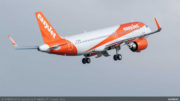Forecasts issued by experts from the two main world airframe manufacturers, Airbus and Boeing, are always eagerly awaited by the supply chain players. This is because the latter, especially subcontractors, base their activity forecasts on the number of planes – as well as their engines and equipment – that are to be produced. Suppliers rely on such data to elaborate their strategic investment or recruitment plan. Indeed French suppliers (component and small parts manufacturers, SME subcontractors in the widest sense) belonging to French industry association, Gifas, can receive an even more detailed breakdown. Each month, Gifas members – in particular those belonging to its Aero-SME Committee – have access to more detailed data provided by the large contractors such as Airbus, Dassault Aviation, Safran, Thales, etc.
So three days before the beginning of the Paris international air show (15-21 June), stakeholders were waiting impatiently for Boeing’s annual forecasts. In the event, they will undoubtedly reassure the entire supply chain in terms of likely production levels for the next twenty years (and therefore the possibility of long-term investment). However they might also be a cause of concern for some players and consulting firms anxious about their capacity to deal with an increase in production rate the like of which has never so far been managed by the aeronautics industry, whether contractors or industrial partners.
Indeed, the cabinet AlixPartners pointed out a few days ago that in the field of single-aisles, the order books at the end of 2014 represented approximately 10 years of production, while the large transport aircraft would spread over 8 years. And this was taking only Airbus and Boeing orders into account.
These order books are leading the two main aircraft manufacturers to envisage higher monthly production rates than they were considering only a few months ago, mainly for the single-aisles such as the A320 (ceo or neo) and the Boeing 737 (classic or MAX).
The figures revealed by Boeing on Thursday 11 June merely confirm analyses presented these past days. Particularly since Boeing took account of all commercial aircraft, from regional planes (excepting turboprops) to the largest airliners (747 ranges and A380), including passenger and freight versions.
The result is edifying. Between 2014 and 2034, the world fleet will double to reach 43,560 planes. Most of these (40,630) will be passengers airliners, despite improved performance expected from freight transport, which has had disappointing figures recently. For Boeing, passenger traffic will increase by 4.9% per year over the period and freight transport by 4.7%.
Out of 21,600 aircraft in service by the end of 2014, 5,510 will still be in service in 2034, 16,090 will be withdrawn gradually, dismantled and replaced by new planes, and nearly 21,960 new planes will be brought into service to ensure the sector’s development. A total of 38,050 aircraft to be produced in 20 years.
This high growth rate will be driven mainly by emerging countries whose purchasing power is growing in parallel with a burgeoning middle class but also concerns domestic markets over very large areas, where single-aisles are still in favour. According to Boeing, single-aisles will account for 70% of the planes to be produced by 2034. Asia will absorb most aircraft (14,330) followed by North America (7,890) and, in third position, Europe (7,310 planes). Then the Middle East (3,180), Latin America (3,020), Africa (1,170) and the 9 CIS countries (1,150).
If Boeing estimates are confirmed, this sector will represent up to 5,600 billion dollars over 20 years.
Nicole Beauclair for Aeromorning
Aircraft manufacturing valued at 5,600 billion dollars over 20 years
 Aerospace news
Aerospace news













Be the first to comment on "Aircraft manufacturing valued at 5,600 billion dollars over 20 years"